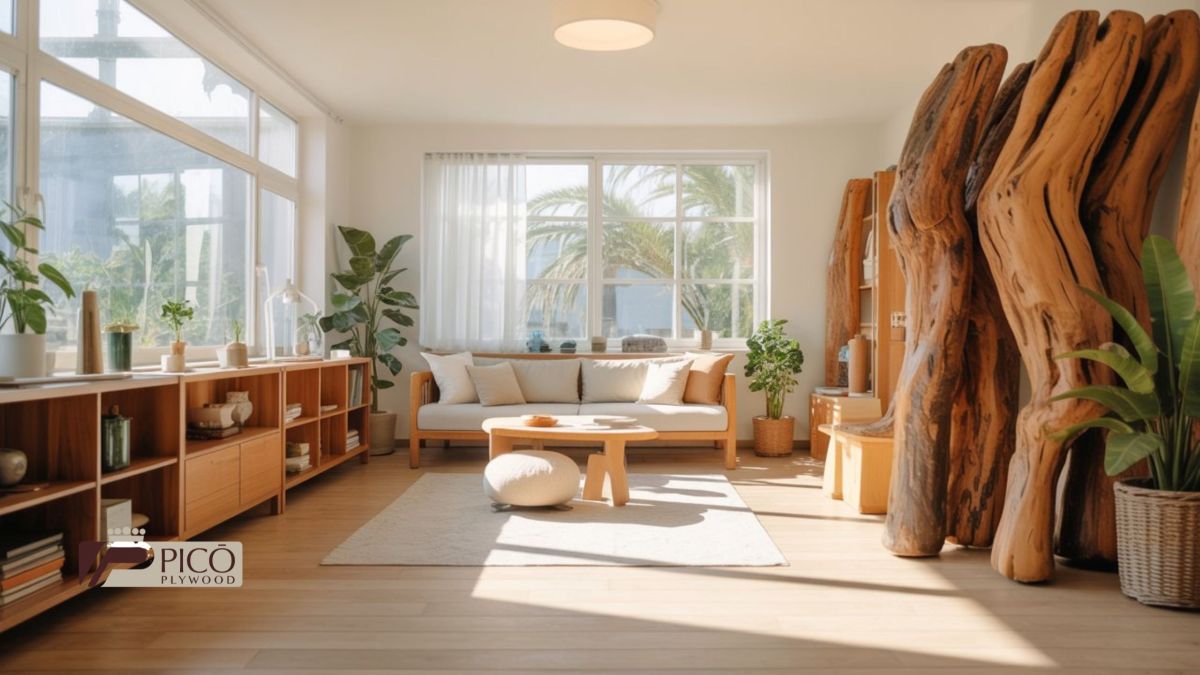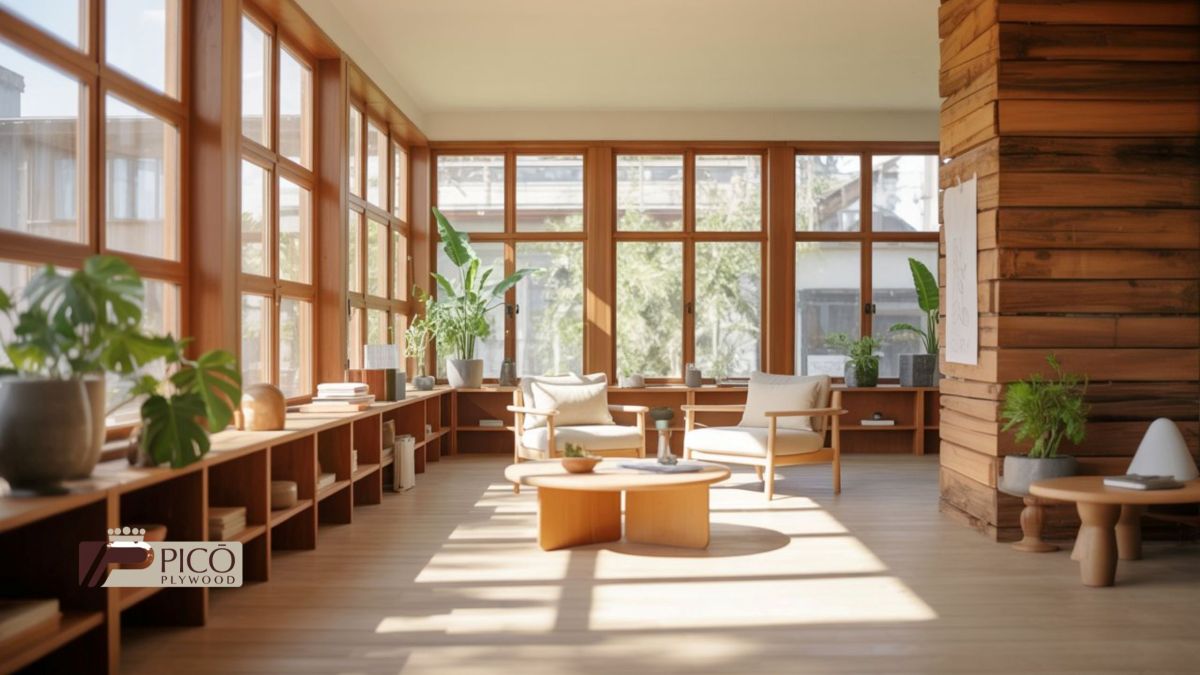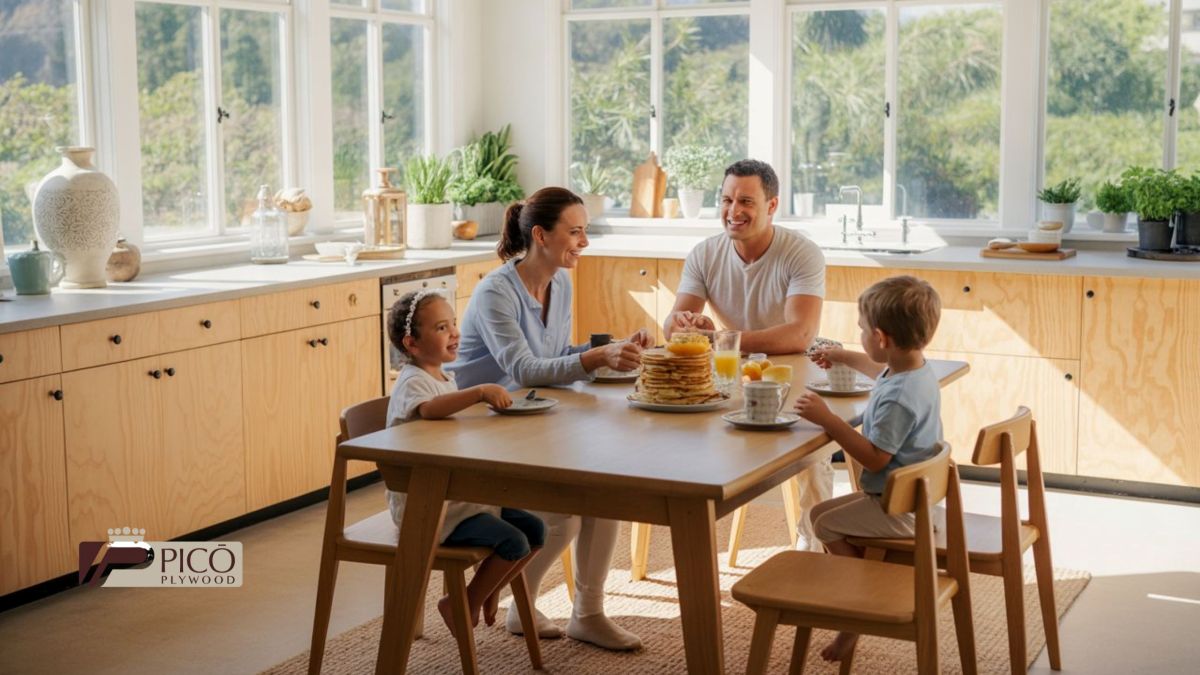pico Plywood Contact
Contact Information
To learn more about our Plywood Products or discuss your project requirements, please reach out to us through the following channels.
Low Formaldehyde
Discover whether all plywood contains formaldehyde

Table of Contents for the Article
One of the most frequently asked questions we receive at Picó Plywood is whether formaldehyde in plywood is an unavoidable component. The answer is clear: not all plywood contains formaldehyde, and there are more and more safe and sustainable alternatives available for construction, carpentry, and interior design projects.
In this complete guide, we will answer all your questions about formaldehyde in wood panels, the health risks, and how to choose formaldehyde-free plywood for your projects.
Formaldehyde is an organic chemical compound (CH₂O) that appears as a colorless gas at room temperature. It is a naturally occurring substance that is also synthetically produced for industrial use.
In the wood industry, formaldehyde has traditionally been used as a main component in the adhesives that bond the wood veneers in plywood. The most common types include:
The reason formaldehyde has traditionally been used in wood adhesives comes down to three key factors: competitive cost, high mechanical strength, and fast curing during the manufacturing process.
The health risks associated with formaldehyde are well documented by international health organizations. Exposure to this compound can cause:
The World Health Organization (WHO) has classified formaldehyde as a Group 1 carcinogen, meaning there is sufficient evidence that it can cause cancer in humans.
Vulnerability increases significantly in enclosed or poorly ventilated spaces, where formaldehyde emissions can accumulate and exceed safe levels.

No, not all plywoods contain formaldehyde. This is a very common misconception that we want to definitively clarify.
There is a clear difference between:
The ULEF (Ultra Low Emitting Formaldehyde) classification refers to panels that emit extremely low levels of formaldehyde, below the strictest limits set by international regulations.
Soy-based adhesives are a completely natural alternative to formaldehyde. These adhesives, derived from soy protein, offer excellent strength and durability without toxic emissions.
MDI (Methylene Diphenyl Diisocyanate) resins are synthetic adhesives that contain no formaldehyde and emit virtually no gases during their lifetime. They are especially popular in structural applications.
Although traditional phenolic adhesives contain formaldehyde, new formulations have significantly reduced emissions, meeting the strictest regulations.
International certifications ensure that the boards meet specific emission limits:

Look for the following certifications on the product:
Complementary certifications add value and guarantees:
A reliable supplier should always provide the product’s technical data sheet and emission report, specifying the levels of formaldehyde and other compounds.
Formaldehyde-free plywood eliminates the risks associated with exposure to this carcinogenic compound, offering protection especially for children, the elderly, and individuals with chemical sensitivities.
Formaldehyde-free boards contribute significantly to maintaining a healthy indoor environment, which is especially important in homes, offices, and educational spaces.
Choosing eco-friendly materials is part of a more responsible circular economy, reducing the environmental impact of construction projects.
Sustainable construction projects are increasingly valuing these materials, adding points to certifications such as LEED or BREEAM.

At Picó Plywood, we are specialists in technical and eco-friendly plywood. As a leading supplier in Spain, we offer:
Our catalog includes the best international brands of formaldehyde-free plywood, ensuring quality and safety in every project.
No, it is not mandatory. Formaldehyde has traditionally been used for economic and technical reasons, but there are safe and effective alternatives that do not require this compound.
Yes, it is legal as long as it complies with European emission standards (E1 or E2). However, regulations are becoming increasingly strict, and the trend is moving towards safer materials.
If you use conventional plywood, it’s important to ensure proper ventilation and, preferably, choose boards with at least an E1 certification. For living spaces, we always recommend NAF or ULEF options.
Check the product label, request the technical data sheet from the supplier, or look for official certifications. A reliable supplier should always be able to provide this information.
Formaldehyde in plywood is not inevitable. Today, there are multiple safe, sustainable, and technically superior alternatives that eliminate health risks without compromising project quality.
Choosing certified materials means choosing health, safety, and long-term durability. In a market increasingly aware of the importance of indoor air quality, investing in formaldehyde-free plywood is a smart decision for both professionals and homeowners.
At Picó Plywood, we are your partner for technical, ecological, and safe plywood. Our commitment to excellence and sustainability makes us the leading supplier for projects that demand the highest quality standards.
At Picó Plywood, we understand that every project is unique and requires customized solutions. Our commitment goes beyond simply selling products — we support you from the initial selection to final delivery, ensuring you receive exactly what you need for your project.
pico Plywood Contact
Contact Information
To learn more about our Plywood Products or discuss your project requirements, please reach out to us through the following channels.
Esta web utiliza cookies para que podamos ofrecerte la mejor experiencia de usuario posible. La información de las cookies se almacena en tu navegador y realiza funciones tales como reconocerte cuando vuelves a nuestra web o ayudar a nuestro equipo a comprender qué secciones de la web encuentras más interesantes y útiles.
Strictly necessary cookies must always be enabled so that we can save your cookie setting preferences.
If you deactivate this cookie we will not be able to save your preferences. This means that each time you visit this website you will have to activate or deactivate cookies again.
Esta web utiliza Google Analytics para recopilar información anónima tal como el número de visitantes del sitio, o las páginas más populares.
Dejar esta cookie activa nos permite mejorar nuestra web.
Please enable strictly necessary cookies first so we can save your preferences!